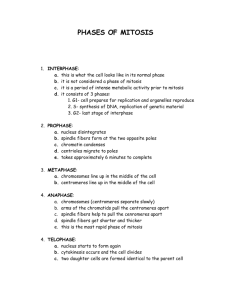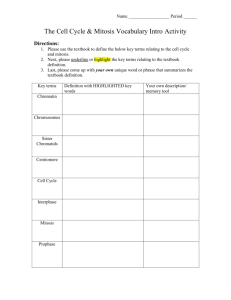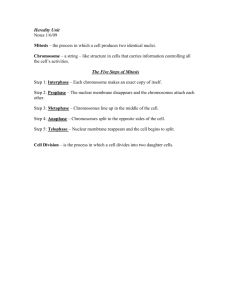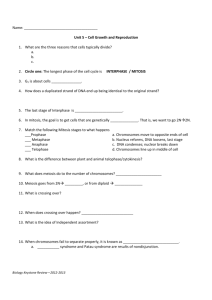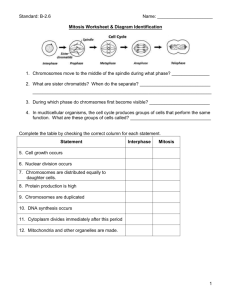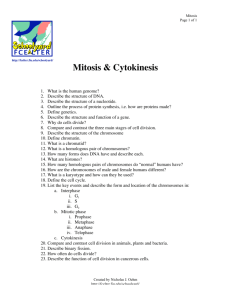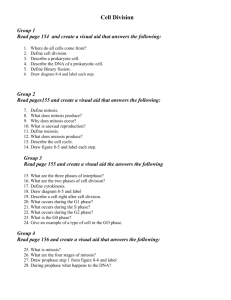Topic 2 notes
advertisement
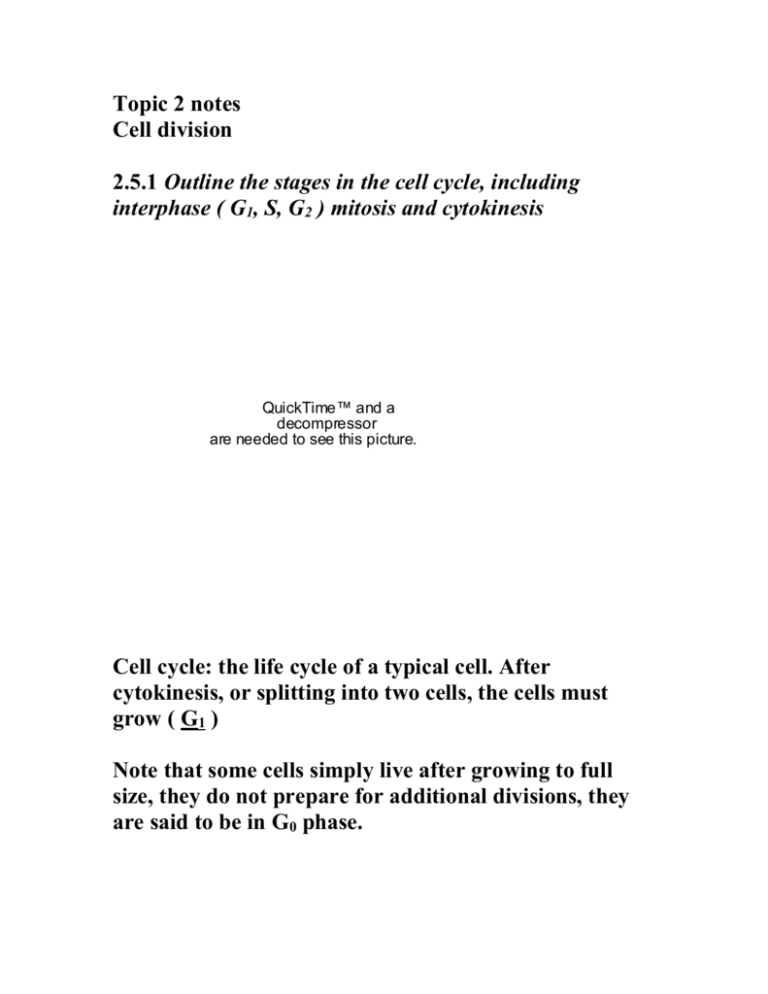
Topic 2 notes Cell division 2.5.1 Outline the stages in the cell cycle, including interphase ( G1, S, G2 ) mitosis and cytokinesis QuickTime™ and a decompressor are needed to see this picture. Cell cycle: the life cycle of a typical cell. After cytokinesis, or splitting into two cells, the cells must grow ( G1 ) Note that some cells simply live after growing to full size, they do not prepare for additional divisions, they are said to be in G0 phase. S-phase is where DNA is replicated in preparation for the next cell division G2 phase is where the cell prepares for mitosis, mitochondria, and other organelles are replicated. Mitosis is the dance of the chromosomes. The DNA information needs to be equally divided between the two daughter cells. It is a continuous process that is artificially divided into 4 phases. Prophase: Chromosomes become visible by coiling around histones. Nuclear membrane dissolves, spindle starts to form. Centromeres are proteins that join exact copies of DNA together ( Chromatids). Metaphase: Spindle fibers have started to shorten and they line the chromosomes up down the middle of the spindle. Anaphase: Centromeres separate and exact copies of DNA are drawn to opposite sides of the spindle. Telophase: Chromosomes have reached the spindle end, new nuclear membranes form around the bundled chromosomes. Cytokinesis: is the actual splitting of the cell into two daughter cells. In plants, a cell plate forms first. In animals, a cleavage furrow forms that gradually divides the cells. 2.5.2 State that tumors ( cancers) are the result of uncontrolled cell division and that these can occur in any organ or tissue. A cell that constantly copies itself can sometimes be called cancerous, especially if it no longer differentiates into a specific kind of cell. Chemo therapy is a drastic method of stopping all cell division in your body. Cancer cells hopefully die before you do. Hair stops growing, skin stops replacing, you are in suspended animation for a while. 2.5.3 State that interphase is an active period of life of a cell when many metabolic reactions occur, including protein synthesis, DNA replication and an increase in the number of mitochondria and/or chloroplasts. 2.5.4 Describe the event that occur in the four phases of mitosis ( prophase, metaphase, anaphase and telophase) Include supercoiling around histone proteins, attachment of spindle microtubules to the centromeres, the splitting of the centromeres, movement of sister chromosomes to opposite poles, and breakage and reformation of nuclear membranes. 2.5.5 Explain how mitosis produces two genetically identical nuclei. During S phase all the chromosomes have exact copies of themselves made. These copies are attached together by the protein centromere. Each individual copy is called a chromatid. Mitosis is the mechanism for assuring that each daughter cell receives one copy of each chromosome. 2.5.6 State that growth, embryonic development, tissue repair and asexual reproduction involve mitosis. Mitosis creates exact copies of the original cell. This is how multicellular animals grow and organisms repair themselves. Meiosis is the special division that creates sexual reproduction cells, or gametes.
